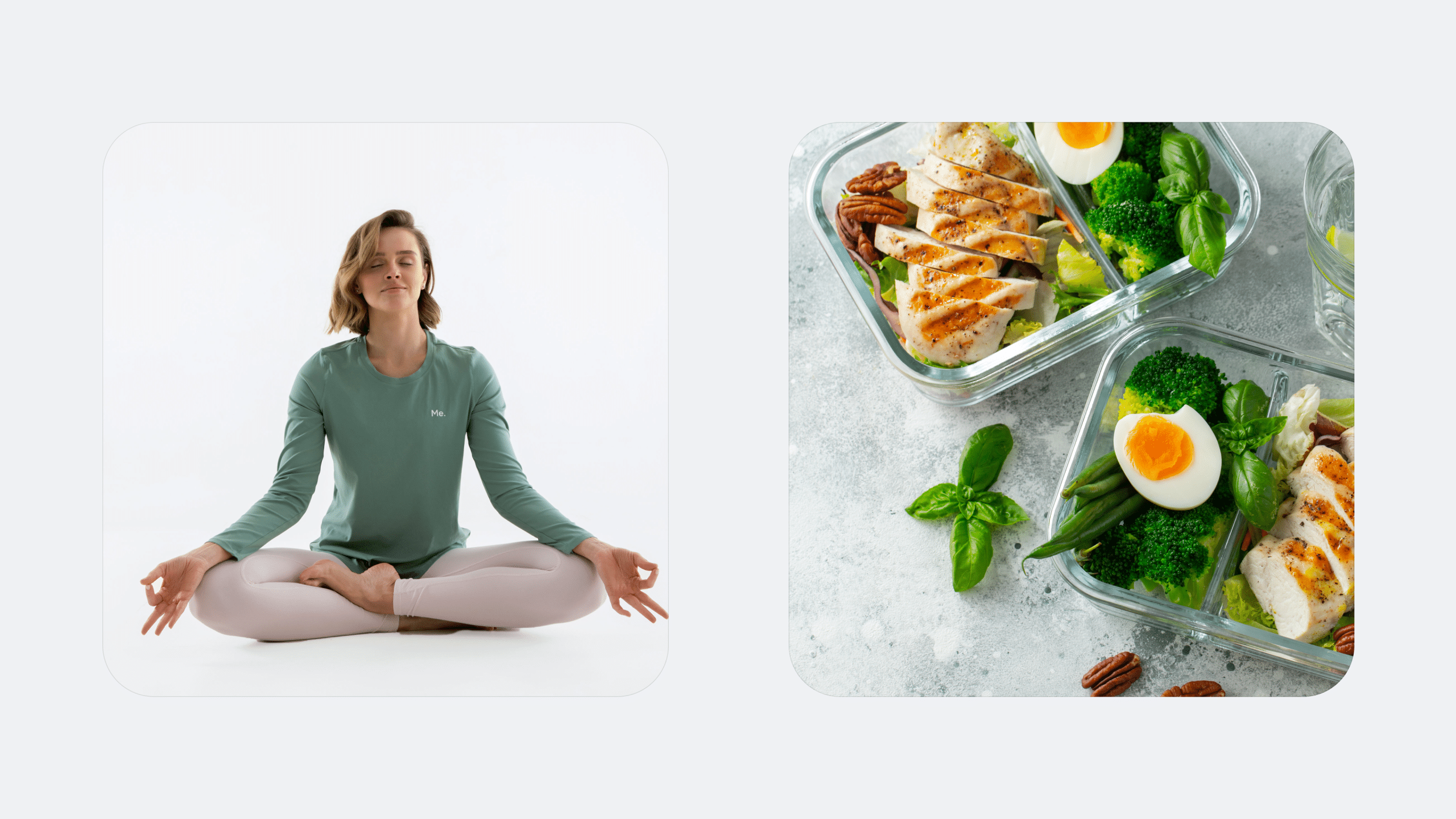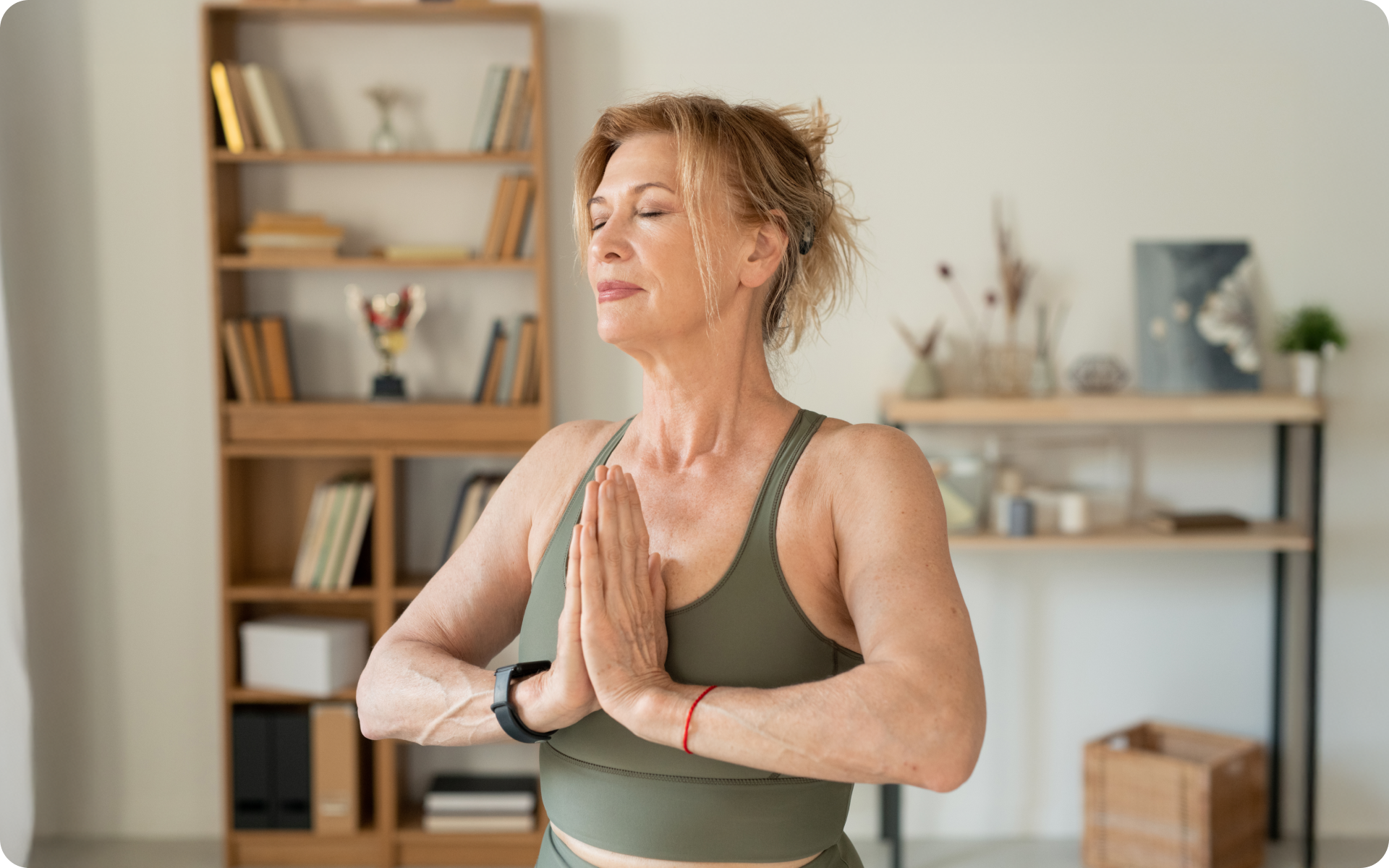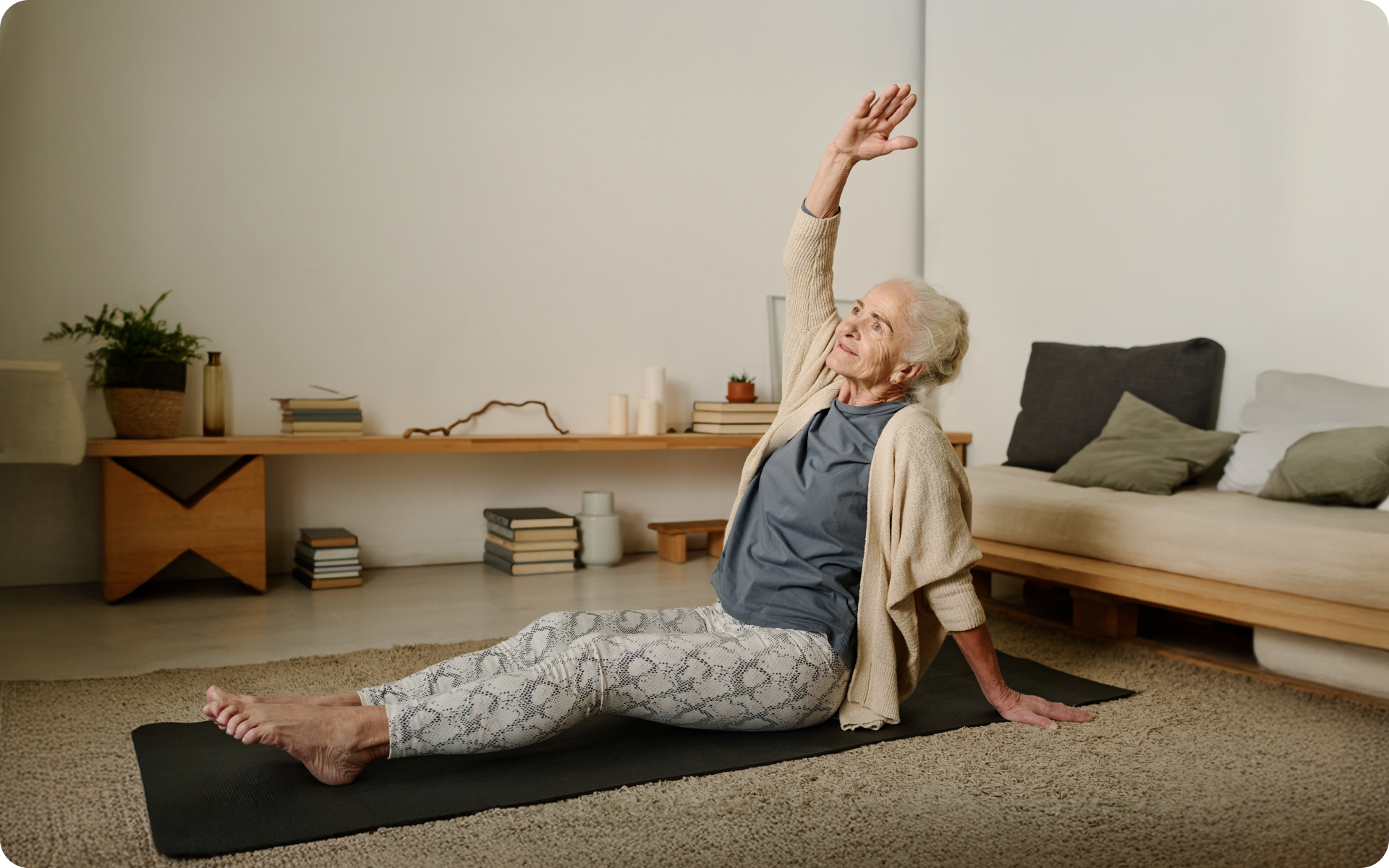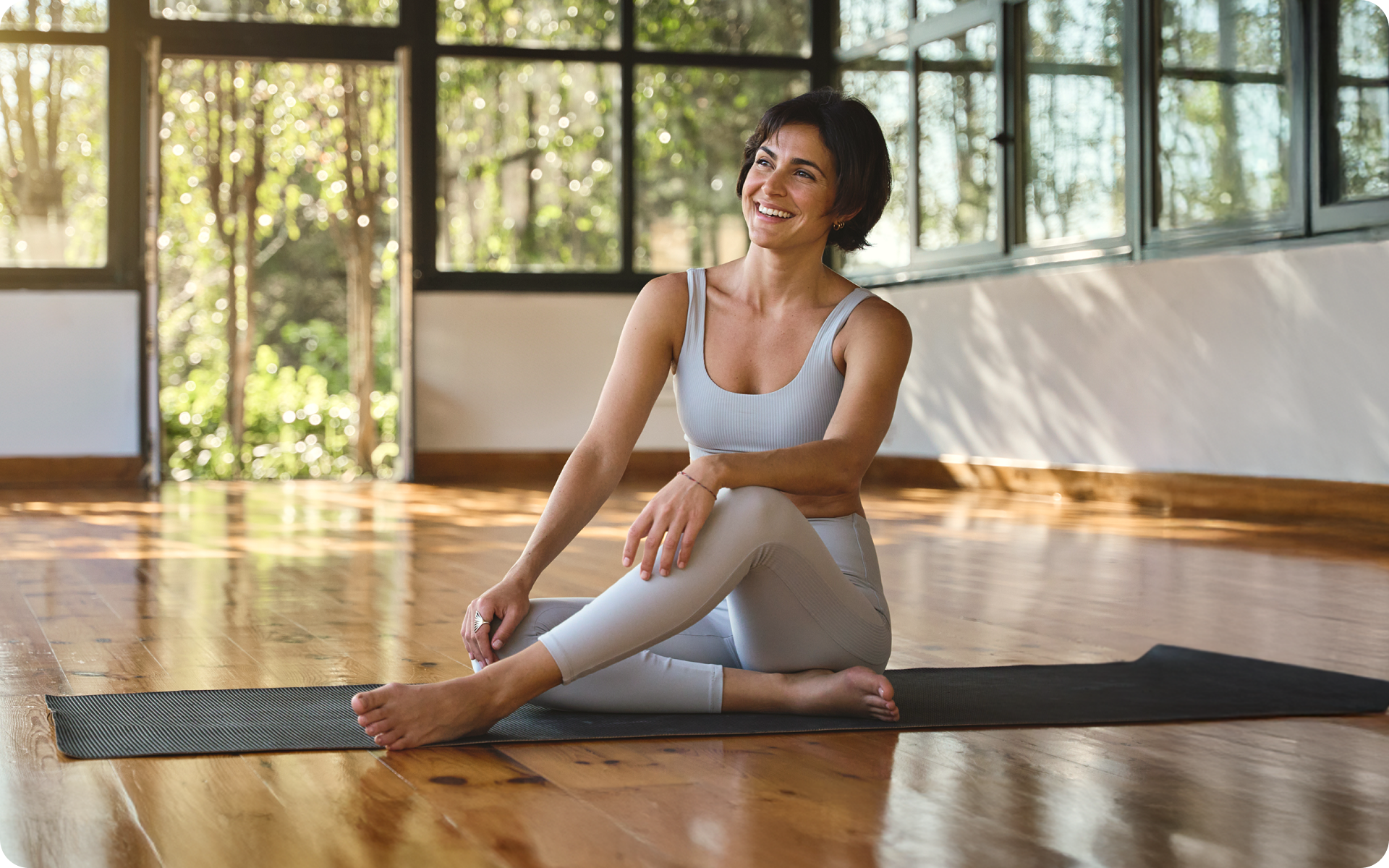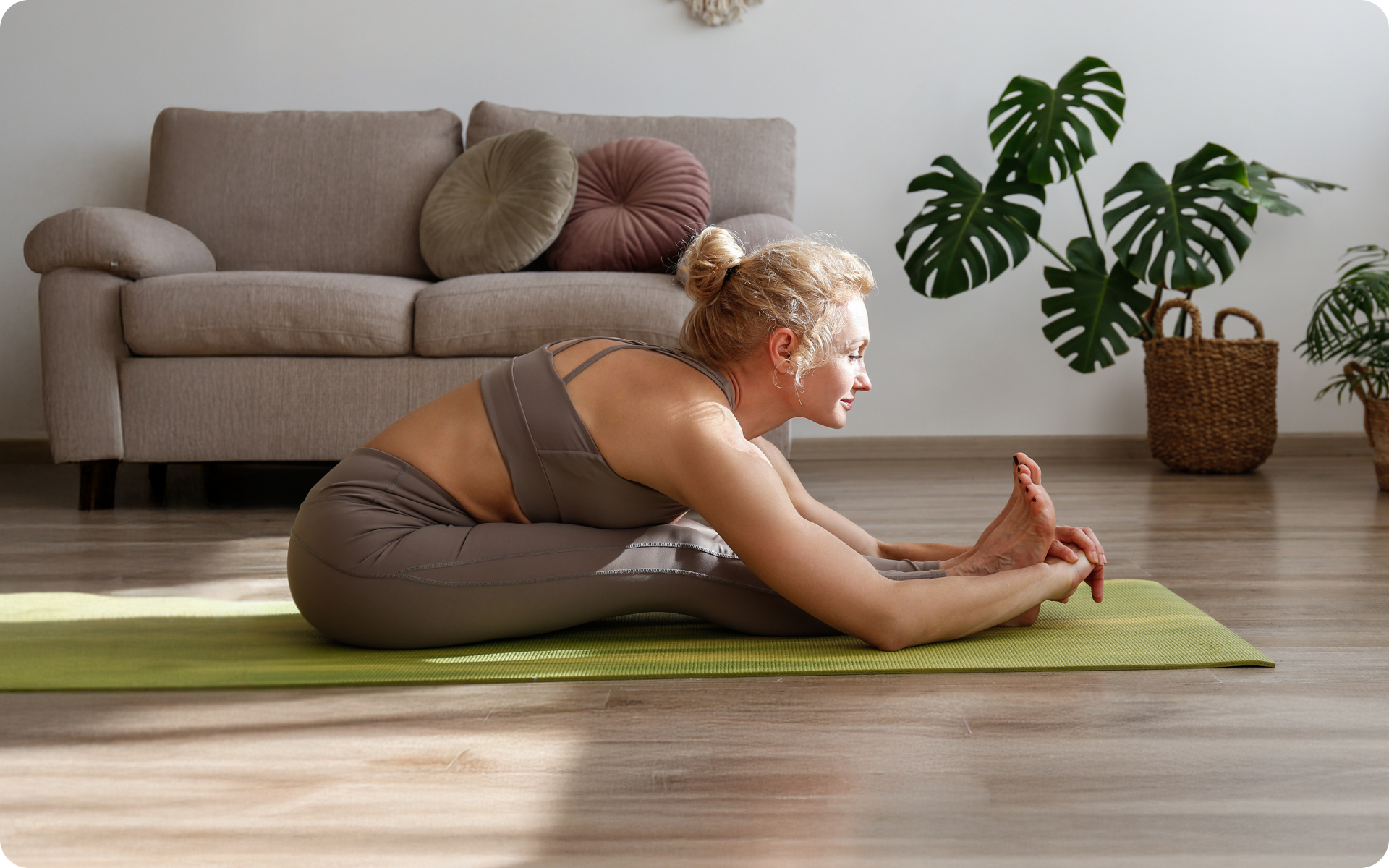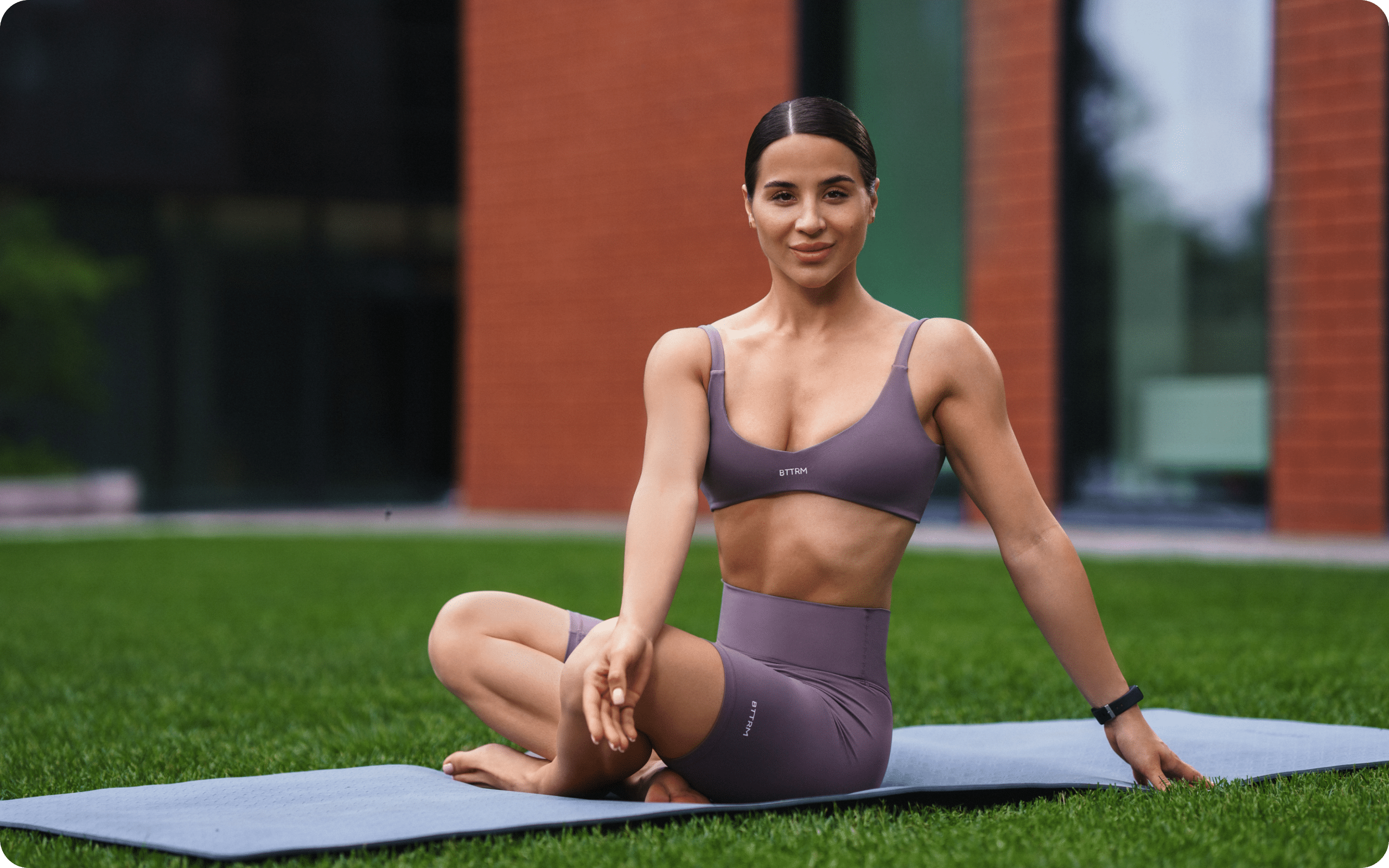Exercise after eating is not generally recommended. However, certain forms of slow yoga flows may be practiced at relatively short intervals of time after the completion of eating to help with digestion. It should be noted that this article is not a recommendation to perform yoga immediately after eating a heavy meal, but rather an outline of the potential benefits of yoga on digestive health and why certain flows can be performed in a shorter time window after eating in comparison to other forms of exercise.
Overeating is a common issue among people all over the world. Eating until you’re 80% full may be the Japanese method of living healthy (7), but when it comes to our favorite dishes, the realization is usually late to the table. As many of us know all too well, overeating can leave us uncomfortable and not wanting to move.
While more research is needed, evidence suggests that yoga can complement traditional approaches to managing digestive issues and improve overall quality of life. Although yoga may provide many helpful benefits to help with digestion, it’s still advisable to wait at least a short while after eating before you start your yoga session. Doing so will prevent potential discomfort. Performing these poses immediately after a meal may disrupt your digestive system further.
Read More: What To Eat Before Yoga: Foods That’ll Help You Relax, Reset, And Recenter
Is It Okay to Do Yoga After a Meal?
Yoga is most often practiced on an empty stomach, but sometimes busy schedules and commitments necessitate practicing after a meal. If you’re wondering whether it’s right to indulge in such a workout after eating, here are some key points to consider:
Digestive Comfort
Practicing yoga immediately after a meal can lead to discomfort, bloating, and nausea. It’s generally recommended to wait 2-3 hours after a heavy meal before you engage in a yoga session (6). After a light snack, it’s advisable to wait around 30 minutes to an hour.
Types of Yoga To Consider
Restorative Yoga: Restorative yoga focuses on gentle poses and relaxation techniques that are more suitable after a meal. These poses help the digestive process without straining the body (13).
Intense Practices: Vinyasa, Ashtanga, or Bikram yoga involve more vigorous movements and inversions that can be uncomfortable on a full stomach.
Digestive Benefits
Certain yoga poses can help with digestion and relieve bloating when done appropriately after a light meal. Examples include:
- For Better Digestion
Ardha Matsyendrasana (half lord of the fishes pose) and Pavanamuktasana (wind-relieving pose) are advisable for digestion as they stimulate digestive fire, improve digestion, and help release gas (11, 15).
- For Bloating
Apanasana (knees-to-chest pose) and Balasana (child’s pose) are good for bloating as they alleviate gas, massage the abdominal organs, and gently compress the abdomen (5).
- For Acidity
Supta Baddha Konasana (reclining bound angle pose) and Vajrasana (thunderbolt pose) are recommended for reducing acidity, helping digestion, promoting relaxation, and reducing acid reflux (16).
Hydration
Make sure you drink enough water before and after your yoga session, but avoid drinking large quantities immediately beforehand.
Listen to Your Body
For some people, a light yoga session after a meal can be comforting, while others may need more time to digest. Adjusting poses and intensity based on personal comfort is the most important factor to remember.
Most experts typically advise against intense physical activity post-meal due to the body’s focus on digestion. Moderate- and high-intensity exercise diverts blood flow away from the digestive system so it can be utilized by the muscular and cardiovascular systems. With less blood available to help with digestion, exercise can make it difficult for your body to complete this process effectively. Gentle stretches and mindfulness practices are a better choice.
Yoga Asana After Eating
Here are various poses you can do after eating to help with digestion:
Vajrasana
Vajrasana gets its name from the Sanskrit word Vajra, which means diamond or thunderbolt. This is a kneeling pose that can be done even when you’re very full. This pose promotes digestion and other bodily functions.
The alignment of this pose promotes blood flow to the digestive tract, which makes it one of the only yoga poses that can be done immediately after a meal.
How to Do It (10):
- Start by standing straight with your hands by your sides.
- Lean forward and gently kneel down on your yoga mat.
- Place your pelvis on your heels. Make sure your toes face outward when you do this. Your thighs should be pressing your calf muscles.
- Another thing you should do is make sure your heels are as close to each other as possible.
- Make sure you don’t place your toes on top of each other. They should be next to each other.
- Place your palms on your knees – they should be facing up.
- Straighten your back and look forward.
- Hold this pose for a while.
If you have a knee or ankle injury, you may need to modify or avoid this pose.
There are numerous benefits associated with this pose.
- It’s one of the only yoga poses that is recommended immediately after a meal due to its ability to help with digestion.
- It promotes a full range of motion into knee flexion and ankle plantarflexion.
Wind Releasing Pose
This pose goes by different names. Some people call it the wind-removing pose, others call it the wind-liberating pose, and it is also known as Pawanmuktasana. This pose helps with bloating, which is something you’re likely to experience after overeating.
Unlike Vajrasana, this pose shouldn’t be performed immediately after eating due to its constriction of the digestive tract. You should wait at least 30 minutes before attempting it. It helps with bloating by helping release gas, which justifies the names it has been given. For obvious reasons, you should do this pose only while alone.
How to Do It (4):
- Lie down on your back.
- Inhale and hold your right knee against your chest.
- Start moving your knee from one side to the other so that you’re massaging your abdominal organs.
- Take a few deep breaths, switch legs, and do the same with the other knee.
If you’ve mustered up the courage to crush your weight loss goal, let BetterMe take the sting out of this demanding process. Our app will help you restructure your habits, remold your life, and crank up your fitness results!
Standing Forward Bend Pose
This pose is also referred to as forward fold or Uttanasana. It is quite effective for dealing with bloating. It does this by pushing food along the gastrointestinal tract, which helps relieve constipation. As with the previous pose, you should wait at least 30 minutes after eating to perform this one.
How to Do It (4):
- Start by standing with your feet about hip-width apart and your arms relaxed by your sides.
- Inhale deeply, elongating the spine.
- As you exhale, hinge at your hips and fold yourself forward, allowing your head and arms to hang gently. Keep a slight bend in your knees.
- Hold the pose for the desired amount of time.
- Release the pose by inhaling, lifting your arms out to the sides, and returning to a standing position.
Supported Seated Forward Fold
This pose helps improve blood circulation through the abdominal organs, which helps promote digestion. Wait for at least 30 minutes after your meal before performing this pose.
How to Do It (14):
- First, take a bolster or a pillow and place it on top of your thighs while seated. It’s good if the pillow is firm as it will massage your stomach gently.
- Extend your legs straight. Once you’ve done this, make sure your toes are pointed toward your face.
- Fold your torso over the pillow and start taking deep breaths into the belly and lower abdomen.
- Hold this position for as long as you need before returning to sitting upright.
Child’s Pose
This pose is also referred to as Balasana. It’s effective for dealing with indigestion and may also help with bloating. Wait for at least 30 minutes after eating a meal to perform this pose.
How to Do It (4):
- Begin on your yoga mat on all fours, supported by your hands and knees.
- Sit back onto your feet, keeping them and your knees hip-width apart.
- Gently lower your upper body forward, resting your forehead on the floor.
- Allow your arms to rest loosely by your sides, hands by your feet, with palms facing up.
- Inhale, lengthen your spine, and focus on your breath.
Downward Dog Pose
This pose is also known as Adho Mukha Svanasana. It’s one of the most popular yoga poses, and if you’ve been doing yoga for some time, you’ve almost certainly done it before. Wait for at least 30 minutes after eating before performing this pose.
How to Do It (4):
- Start on all fours (hands and knees). Align your wrists directly under your shoulders while tucking your toes under.
- Exhale and lift your hips up and back.
- Straighten your legs, forming an inverted “V” shape.
- Press your heels toward the ground.
- Press down through your hands and keep your shoulders away from your ears.
- Pedal your feet back and forth if you feel tightness in your calves and hamstrings, or maintain a static hold.
Ardha Chandrasana
This pose is also referred to as the half-moon pose. Although it doesn’t involve significant compression of the digestive tract, it’s still best to hold off on this one for at least 30 minutes after finishing a meal.
How to Do It (1):
- Start by standing straight on a yoga mat.
- Lift your right hand to bend sideways toward the left side of your body and try to touch the ground.
- Repeat the same procedure with your other hand, holding each position for the desired amount of time.
Gomukhasana
This pose is commonly referred to as the cow face pose. It’s a seated, upright pose that doesn’t compress the digestive tract, which makes it a good option for after a meal. In addition, the pose provides a nice stretch for the shoulders and triceps.
How to Do It (1):
- Fold your left leg and place your ankle near your left hip.
- Take your right leg and place it on the left leg so both knees touch each other.
- Take both your hands at the back so the right hand is holding the left hand. Make sure you keep your spine straight while doing this.
- Hold this position for the desired amount of time.
- Repeat the same procedure after switching sides.
Bridge Pose
Also known as Setu Bandha Sarvangasana, this is yet another pose that doesn’t compress the digestive tract, with the added benefit of providing strengthening benefits for the glutes and core. It’s best to wait at least 30 minutes after a meal to perform this pose.
How to Do It (3):
- Lie on your back with knees bent and feet flat on the floor/mat, hip-distance apart.
- Place your arms alongside your body, palms down.
- Inhale and press down firmly through your feet. Lift your hips, initiating the movement from the pelvis.
- Keep your shoulders squeezed back and your core and glute muscles engaged. Hold for a few seconds and return to the starting position.
Reasons why BetterMe is a safe bet: a wide range of calorie-blasting workouts, finger-licking recipes, 24/7 support, challenges that’ll keep you on your best game, and that just scratches the surface! Start using our app and watch the magic happen.
Chair Pose
Also known as Utkatasana, the chair pose involves keeping a long spine, which helps with digestion. It also provides strengthening benefits for the lower extremities.
How to Do It (3):
- Stand with your feet about hip-width apart and your toes facing forward.
- Sit your hips back as if sitting on a chair and extend both your hands over your head. Make sure to keep your chest high and shoulders away from your ears.
Cat-Cow
This particular pose gently stretches your back, abdominal muscles, hips, neck, and chest. It is a slow flow between two yoga poses that can be performed at very low intensity, preventing blood redistribution away from the digestive system. You should wait at least 30 minutes after a meal to perform this pose.
How to Do It (2):
- Start on all fours with your back flat. Make sure your hands are under your shoulders and your knees are below your hips.
- While exhaling, round your back toward the ceiling, tucking your tailbone and bringing your chin to your chest.
- While inhaling, arch your back downward, dropping your stomach and lifting your chest, chin, and tailbone.
- Alternate between the two poses, flowing with the pace of your breath. Perform for the desired number of breaths.
Seated Spinal Twist
Also known as Ardha Matsyendrasana, this pose provides gentle strength for the lower back and abdominal muscles. As it involves rotation in the abdominal region, you should wait at least 30 minutes after a meal before performing this pose.
How to Do It (3):
- Sit on the floor with your legs crossed.
- Place your feet under your knees and sit upright, lengthening your spine.
- Place your left hand on your right knee and bring your right hand behind you.
- Keeping your spine lengthened, twist to the right.
- Maintain the twist for a few breaths.
- Return to the start position and repeat on the other side.
FAQs
Does exercise after eating help you lose weight?
Exercising after eating can influence weight loss, but it depends on the type and timing of exercise (8). While it is known that exercising increases metabolic rate and helps with calorie burn, it’s important to remember that indulging in a workout immediately after eating can lead to digestive discomfort.
Type of Exercise:
- Light activities such as casual walking and restorative yoga can promote digestion and help burn calories without causing discomfort. You should wait at least 30 minutes after eating before performing activities like this.
- Moderate- and high-intensity exercises are best performed 2-3 hours after a meal.
Insulin Sensitivity: Post-meal exercise can improve insulin sensitivity, which helps with better glucose utilization and can help with weight management (9).
Ultimately, weight loss is dependent on maintaining a caloric deficit and a well-rounded diet that is rich in vital nutrients. Consistent exercise, whether before or after a meal, will help you reach that deficit in a more systematic manner.
Do you burn more calories if you exercise after eating?
There’s no significant evidence that exercising after eating will help you burn more calories. Two minor factors you should keep in mind are:
- Thermogenic Effect: The body expends energy to digest food (thermogenesis). Combining this with light exercise may slightly increase total calorie burn. Moderate- to high-intensity exercise less than 2 hours after eating will not be beneficial for increased calorie burn compared to waiting until 2-3 hours after your meal due to blood redistribution away from the digestive tract.
- Exercise Intensity: The intensity and duration of exercise determine calorie burn more significantly than the timing relative to meals.
Exercising on a moderately full stomach can sometimes improve performance in anaerobic or low-intensity aerobic activities due to better energy availability, but may cause discomfort in higher-intensity exercise. Listen to your body and find the timeframe that works best for you to complete your workouts.
Is it better to do yoga before or after eating?
Choosing to do yoga before or after eating depends on the yoga style and individual preference:
- Before Eating:
Pros: Your energy levels and performance may be higher, there’s a reduced risk of digestive discomfort, and you can better focus on breath and movements.
Cons: You may need a light snack if you feel weak or low on energy (6).
- After Eating:
Pros: Certain poses can help with digestion and relieve discomfort.
Cons: When you do yoga right after eating, you’re at risk of nausea, bloating, and reduced ability to perform intense poses.
Practicing yoga on an empty or lightly-filled stomach is typically recommended, waiting 2-3 hours after a large meal or 30 minutes to an hour after a light snack.
What is the best time to do yoga?
The best time to practice yoga can differ depending on your lifestyle, personal preferences, and fitness goals. We’ve mentioned the pros and cons of doing yoga throughout the day:
- Morning:
Pros: Sets a positive tone for the day, boosts energy, improves focus, and establishes a routine.
Cons: May feel stiff initially, and require a longer warm-up.
- Afternoon:
Pros: Good for breaking up the day, re-energizing, and relieving stress.
Cons: It may conflict with work or other daily activities.
- Evening:
Pros: Helps you unwind and relax, can help with better sleep, great for stress relief.
Cons: Intense practices may be too stimulating close to bedtime.
Ultimately, the key to a successful yoga regimen is regular practice. Choose a time that suits your schedule and allows consistency.
The Bottom Line
Many slow-flow yoga poses can be performed with less of a time gap after eating than moderate- and high-intensity exercise and can help with digestion. As discussed above, you should wait at least 30 minutes from when you finish eating before you start your slow-flow yoga session.
If you suffer from chronic GI issues or conditions, consult your doctor before you start any new exercise program.
DISCLAIMER:
This article is intended for general informational purposes only and does not serve to address individual circumstances. It is not a substitute for professional advice or help and should not be relied on for making any kind of decision-making. Any action taken as a direct or indirect result of the information in this article is entirely at your own risk and is your sole responsibility.
BetterMe, its content staff, and its medical advisors accept no responsibility for inaccuracies, errors, misstatements, inconsistencies, or omissions and specifically disclaim any liability, loss or risk, personal, professional or otherwise, which may be incurred as a consequence, directly or indirectly, of the use and/or application of any content.
You should always seek the advice of your physician or other qualified health provider with any questions you may have regarding a medical condition or your specific situation. Never disregard professional medical advice or delay seeking it because of BetterMe content. If you suspect or think you may have a medical emergency, call your doctor.
SOURCES:
- 3 Simple Yoga Poses After Dinner That Can Boost Digestion (2017, food.ndtv.com)
- 5 Gentle Yoga Poses for Digestion After a Big Meal (2015, sonima.com)
- 6 Yoga-Inspired Poses That Undo Overeating (2015, cosmopolitan.com)
- 7 Yoga Poses To Do Post Dinner For A Good Night’s Sleep (2019, stylecraze.com)
- 13 Yoga Poses To Relieve Gas and Bloating (2023, health.com)
- Do’s and Don’ts of Yoga Practice ( 2020, yoga.ayush.gov.in)
- Don’t Eat Until You’re Full ― Instead, Mind Your Hara Hachi Bu Point (2019, health.cleveland.org)
- Eating Tips Before and After Exercise (diabetes.org)
- Exercising Tactically for Taming Postmeal Glucose Surges (2016, ncbi.nlm.nih.gov)
- Feeling bloated after every meal? Try these after dinner Yoga poses to boost your digestion (2020, timesnownews.com)
- Importance and Benefits of Ardha Matsyendrasana in Daily Life (2020, International Journal of Research Publication and Reviews)
- Metabolism (betterhealth.vic.gov.au)
- The 7 Most Common Types of Yoga, Explained ( 2023, shape.com)
- The One Yoga Pose You Should Do After A Big Meal (2020, mindbodygreen.com)
- Yoga asanas for gastric problems (artofliving.org)
- Yoga For Indigestion: Proven Yogasanas To Relieve Dyspepsia In Winters (2023, netmeds.com)

